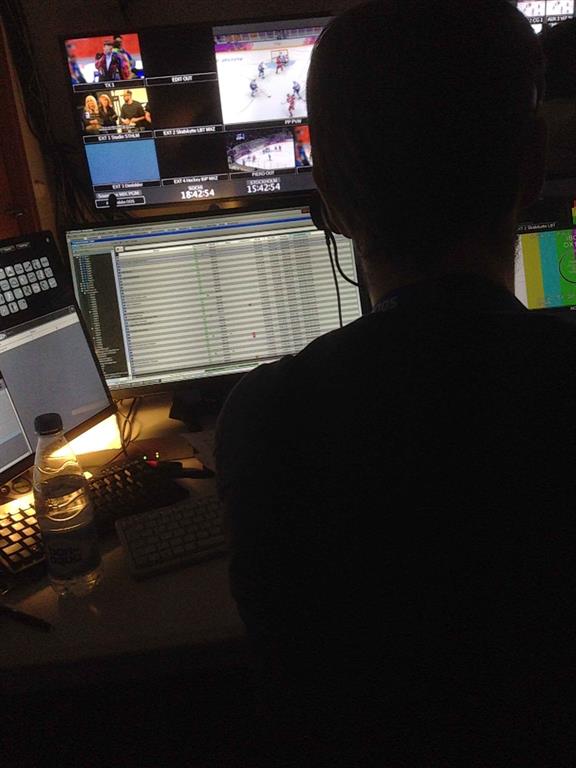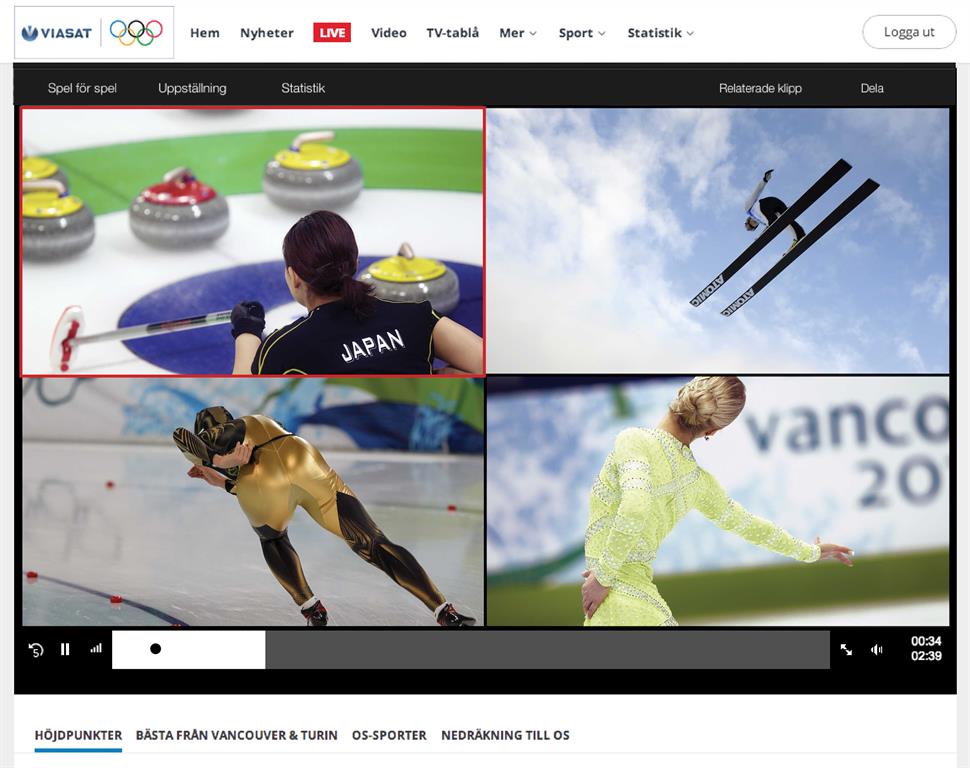For Viasat, an Auspicious Debut

A Viasat IP director station
SOCHI, RUSSIA—Viasat’s first appearance as Sweden’s rightsholding broadcaster saw the pay TV operator rely on massive connectivity, file-based workflows and a split production approach between Stockholm and Sochi.
If the ratings are any indication, Viasat — the first Swedish rightsholder after more than 50 years of broadcasts from pubcaster SVT — got it right.
Viasat produced 12 HD channels for its coverage, with primetime coverage on TV3 in Sweden producing ratings gold out of its Sochi control room and studio. A second studio broadcast and most of the remaining programming was produced back home in Stockholm.
Viasat Technology Producer Mikael Krantz said the basic connectivity that allowed Viasat’s split production to take place involved a redundant fibre connection from Sochi to Stockholm that was divided into 12 video feeds to Stockholm, and one return feed. On the data side, a 10 Mbps connection was used for radio, while a 300 Mbps pipe allowed for a truly mixed edit infrastructure to flourish.

Viasat’s produced live content from its Sochi control room. Editing was mostly Avid and FCP, with seats and producers in the Sochi IBC, at the smaller Mountain Broadcast Center and in Stockholm. All of these seats connect to a large EVS XStoreNAS based in Sochi. Also in the mix was a huge Petabyte storage area in Stockholm, and an EVS network in Sochi made up of XT3s, IP Director PAM, XTAccess engine and XFiles.
All incoming feeds were recorded on XT3 servers, with IPDirector Content Management, MulticamLSM was also used for quick turnaround & highlights creation. The XTAccess handled all file transfer in/out of the EVS & Edit production environment, providing on the fly transcoding where required.
“The NAS is the glue connecting these networks together,” said Krantz. “The edit network can be in Stockholm, it can be in the Mountain Broadcast Center, it can be at the (offsite) studio.”

Home viewers in Sweden could access four screens of Sochi action on a pad device, and choose by touch which audio to hear by touch. As Stockholm is only three hours behind the Sochi time zone, most of the Games were shown live in Sweden, so there was no need for any mass logging beyond what EVS operators would do as part of a normal broadcast.
STUDIOS & STREAMING
The studio programming coupled with eight ENG crews was part of the plan to offer programming that captures a bit of the on-site experience. The Sochi studio was in a picturesque location called TV Tower, and the setup included three cameras, two polecams, and some very interesting on-screen 3D visual elements courtesy of VIZRT software.
“We have a 3D set up where we place 3D objects in the studio,” said Krantz, calling up a graphic of a curling sheet with moving stones, which appears on-screen in front of the anchor positions.
As for streaming, Viasat’s Viaplay streaming service made use of the host broadcaster service called the Olympic Data Feed to supplement the online content.
One interesting feature available in Sweden — and resembling what broadcasters would call a multiviewer — allowed home viewers to have up to nine screens open on a pad device. Audio from any one of the videos could be heard by touching the content.
Get the TV Tech Newsletter
The professional video industry's #1 source for news, trends and product and tech information. Sign up below.

